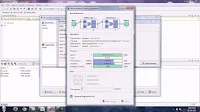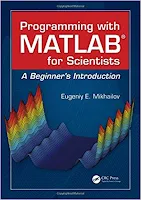MATLAB Programming for Engineers 4th Edition
Stephen J. Chapman ... 592 pages - Publisher: CL Engineering; 4th edition (November, 2007) ... Language: English - ISBN-10: 049524449X - ISBN-13: 978-0495244493 ...
Emphasizing problem-solving skills throughout this very successful book, Stephen Chapman introduces the MATLAB language and shows how to use it to solve typical technical problems. The book teaches MATLAB as a technical programming language showing students how to write clean, efficient, and well-documented programs. It makes no pretense at being a complete description of all of MATLAB's hundreds of functions. Instead, it teaches students how to locate any desired function with MATLAB's extensive on line help facilities. Overall, students develop problem-solving skills and are equipped for future courses and careers using the power of MATLAB.
Emphasizing problem-solving skills throughout this very successful book, Stephen Chapman introduces the MATLAB language and shows how to use it to solve typical technical problems. The book teaches MATLAB as a technical programming language showing students how to write clean, efficient, and well-documented programs. It makes no pretense at being a complete description of all of MATLAB's hundreds of functions. Instead, it teaches students how to locate any desired function with MATLAB's extensive on line help facilities. Overall, students develop problem-solving skills and are equipped for future courses and careers using the power of MATLAB.



















